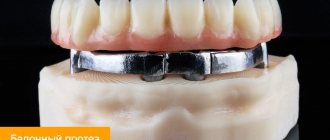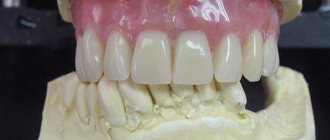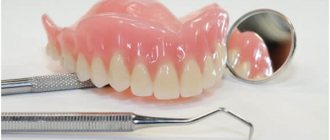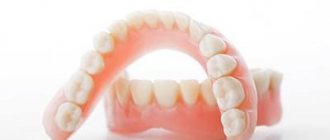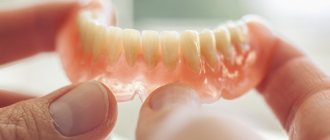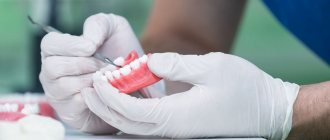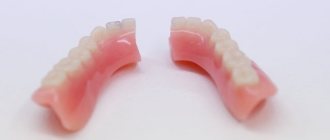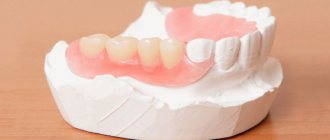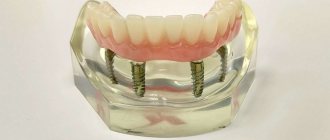A laryngectomy is an operation to remove the larynx. Such surgical intervention is justified in the presence of cancer. However, after such an operation a person receives quite serious psychological trauma. Indeed, as a result of the intervention, the patient is deprived of normal communication with people. Statistics show that about half of those who suffer from laryngeal cancer die within a year and a half after diagnosis. And this is not due to the fact that the patient is not able to completely get rid of the disease, but due to refusal of laryngectomy. Many people simply forget that even after complete removal of the larynx, there is a chance to restore vocal functions. For this purpose, a special device was created - a voice prosthesis.
Ways to restore voice function
At the moment, there are several ways to restore voice function after surgery. This is a speech therapy method, the use of a voice-forming device or voice prosthesis. Each of these methods has its own advantages and disadvantages.
Speech therapy is based on the development of a skill such as esophageal voice. This is another name for ventriloquism. When using this method of restoring voice function, some problems arise. Not every patient is able to swallow air into the esophagus correctly. In addition, such speech is often too quiet, unintelligible and intermittent.
Materials of modern prostheses
Typically, prostheses consist of a prosthetic socket and a frame over which a shell can be stretched.
“The socket is one of the most important individual modules of the prosthesis; it connects the truncated limb with the mechanical parts and absorbs the main static and dynamic loads in the human-prosthesis system,” notes Vladimir Nelyub, director of the Composites of Russia Research Center at Moscow State Technical University. N.E. Bauman. Different types of prostheses also require different components and materials.
- Cosmetic prosthetics are made from silicone, which allows, for example, artificial hands to look as real as possible: at the customer’s request, moles, veins and freckles are applied to them. You can even paint your nails: they look quite realistic.
- Bionic prostheses can also have a silicone shell, but most often the frame made of high-strength materials is not hidden, emphasizing the stylish design and super-filling of the latest generation of artificial hands: motors, batteries and sensors. To make the prosthesis light and durable, carbon fiber is used.
“The use of carbon fiber in prosthetics opens up a lot of possibilities both for the technicians who create them and for the people who will use them in everyday life. Such prostheses are more reliable, durable, and most importantly, much more comfortable for patients. They provide the same force of repulsion from the ground as human muscles and tendons.
Carbon fiber prostheses are lightweight and can be made in various variations, for example, with carbon fiber springs, with long composite arches. Special sensors can measure power, foot position, adjust the angle of its inclination, the stiffness of the prosthesis and the level of shock absorption,” notes Vladimir Nelyub.
To make sleeves that are in close contact with the stump, thermoplastics, silicone, casting resins, polymers, and in some cases wood are used. The type of fastening and material of the sleeve is selected individually, depending on the height of the amputation, the condition of the soft tissues, the presence of scars, scars, skin grafts. With an average stump, any type of fastening can be used, says Stepan Golovin, first deputy general director of the orthopedic. But there are quite a lot of subtleties.
“If a person often sits in a car or flies on an airplane, there must be a fastener that can be unfastened and fastened back unfastened and fastened back on in any form of clothing without anyone noticing. Sitting in a bent position with a prosthesis for several hours is very difficult.”
Stepan Golovin, First Deputy General Director of Orthopedic
“It is important to clarify that according to the requirements of the Russian Federation, materials for a prosthesis must withstand 3 years of use by an adult, that is, now metal parts are irreplaceable in production,” emphasizes Natalya Ivanyuk, General Director of Bionic Natalie. The company produces bionic prostheses based on the Bi-oN neural network.
Manufacturers use various production technologies, balancing between cost, reliability of the prosthesis and its final weight.
“Metals are used as structural materials for load-bearing and loaded parts, as well as plastics for everything else. In recent years, the use of additive technologies has been gaining popularity both in the manufacture of several individual components (fusion of metal powders predominates) and in the manufacture of the main range of parts (selective laser sintering of plastic is more often used here),” explains Pavel Lavrikov, technical director of Klaber Bionics " The company produces bionic prosthetic hands, including the Kleiber Solo.
Photo: Kleiber bionics
What is a voice prosthesis
Today there is another unique device - a voice prosthesis. This device is installed through surgery. Voice restoration occurs thanks to special implantable prostheses. Provox devices, manufactured by the Swedish company Atos, are often used. However, voice prostheses have disadvantages. After about a year, the devices need to be changed. This is the main disadvantage. After all, operations need to be carried out annually, and hardly anyone will like this. The main advantage of this device is its natural voice.
Flaws
A conditional disadvantage of such systems is that they can be installed; a denture with an open palate can only be installed if supporting teeth are present.
Therefore, complete prosthetics, when one or both jaws are completely missing teeth, can be carried out only after preliminary implantation. In some cases, the roots of your own teeth can be used as a supporting element, provided that they have not been destroyed and are able to withstand chewing loads. Like all prostheses of other designs, open-type systems require careful care. This means that the “artificial origin” of new teeth does not relieve the patient of the need to regularly brush them (twice a day, using a toothbrush with soft bristles and non-abrasive toothpaste), and at least once every six months to contact the dentist for professional cleaning of the prosthesis.
Sign up for a free consultation:
Features of using a voice prosthesis
Installation of a voice prosthesis has no contraindications. However, the use of such a device must be carried out in compliance not only with the recommendations of specialists, but also in accordance with the instructions. There are a number of warnings that you need to learn and remember:
- During operation, the voice prosthesis, reviews of which are mostly positive, must be cleaned. To do this, plugs, tubes, and brushes should be selected individually.
- The diameter of the prosthesis must be selected individually for each patient. This is the basic requirement. An incorrectly selected and installed device is the main cause of swelling after a voice prosthesis, or rather, after its use. In this case, tissue compression occurs, which contributes to swelling.
- Before installing a voice prosthesis, it is necessary to find out the likelihood of bleeding.
- Leakage should be monitored during operation of the implant. If such a problem occurs, you should consult a doctor. In this case, the voice prosthesis is replaced.
Correction in the clinic
Re-adjustment of the product in most clinics is free of charge. If you feel that the prosthesis is rubbing the next day after installation, immediately tell the specialist about it.
Typically, several additional adjustments are required over the next two to three weeks.
Dentists recommend not removing dentures for the first two weeks, even at night, so that your gums quickly get used to and get used to the new artificial teeth.
The main task facing the specialist is to achieve maximum comfort and painlessness for the patient while wearing the product. Therefore, before going to the doctor, it is necessary, overcoming the pain, to wear the prosthesis for at least 3-4 hours.
This will allow you to accurately see the imprint of the rubbing areas and make the correct adjustments. The discrepancy between the shape of the gum and the plastic structure is eliminated using a special cutter and grinding machine.
After each adjustment, it is not recommended to wear the prosthesis for one day. In order for the chafing to heal faster during this time, it is necessary to make lotions or rinse the mouth with decoctions of herbs such as:
- chamomile;
- calendula;
- sage;
- yarrow.
If the patient does not follow the doctor’s recommendations and does not wear the prosthesis all the time, which causes pain, then the correction is carried out up to 10 times. After this, the product is considered unfit for use, becomes too fragile and requires the manufacture of a new design.
In what cases is an old prosthesis replaced with a new one?
- If rubbing of the gums occurs after wearing the structure for a long time and the gums shrink, the usual adjustment will not help.
- Broken fasteners or deformation of elements.
- An allergic reaction to the material from which it is made. In this case, a number of studies are carried out to select the appropriate one.
Swelling as a result of using a voice prosthesis
In some cases, after installation of a voice prosthesis, unpleasant phenomena such as swelling may occur. This happens for several reasons. First of all, a physiological complication may occur. It manifests itself as an inflammatory process in the shunt area. The patient develops edema, which occurs during the tracheoesophageal bypass operation, pharyngospasm, hypotonicity, hypertonicity, and also as a result of fluid leaking through the prosthesis. But that's not all.
Another common reason for the development of edema when using a voice prosthesis is an incorrectly selected device. If the implant does not match the patient’s parameters, tissue compression may eventually occur. Ultimately, this leads to the formation of swelling.
Endoprosthetics
Endoprosthetics: from endo to inside
Joint replacement
If there are indications for surgery, joint replacement may be the method of choice. Currently, endoprostheses of the hip and knee joints have been developed and are successfully used. In case of osteoporosis, endoprosthetics are performed with cemented structures. Further conservative treatment of the knee joint helps to reduce the rehabilitation time of operated patients and increase the effectiveness of treatment.
Hip replacement
Condition after endoprosthesis replacement of the right hip joint. Outcome of right-sided coxarthrosis
Joint structure
The hip joint is the largest and most heavily loaded joint. It consists of the head of the femur articulating with the concave, rounded acetabulum in the pelvic bone.
Indications for total hip arthroplasty (THA)
Pathological changes causing persistent dysfunction with pain and contracture:
• Arthrosis deformans
• Aseptic necrosis of the femoral head
• Dysplastic coxarthrosis
• Fractures and false joints of the femur
• Post-traumatic deformities of the acetabulum
• Chronic forms of degenerative-dystrophic diseases (arthritis and arthrosis)
• Ankylosing spondylitis with damage to the hip joint
• Rheumatoid polyarthritis
• Ununited femoral neck fractures
• Ankylosis
The purpose of total hip replacement
The goal of total hip arthroplasty (THA) is to reduce pain and restore joint function. This operation is an effective way to restore joint function, which can significantly improve a person’s quality of life.
With THA, the proximal femur and acetabulum are replaced. The affected areas of the joint are replaced with an endoprosthesis that replicates the anatomical shape of a healthy joint and allows the required range of movements.
An acetabular cup is implanted into the acetabulum. A polyethylene or ceramic liner is installed in the cup. A stem with a cone at the neck is implanted into the thigh to attach the head of the endoprosthesis.
Fixation methods
There are various fixation methods
components of the endoprosthesis to the bone:
— cement fixation — fastening of components with bone cement
— cementless/press-fit fixation – primary mechanical fixation due to the tight fit of the component to the bone, secondary fixation due to osseointegration, during which the bone grows or grows into the porous surface of the component.
According to the leading National Joint Replacement Registry for England, Wales, Northern Ireland and the Isle of Man, the cementless method of hip replacement fixation is the most popular: 39.1% of all clinical cases[10].
Manufacturing materials
For the manufacture of modern endoprostheses, the most advanced and proven materials are used: ceramics, metal and polyethylene, which have high strength and good survival rate in the human body.
Over the past decade, all leading manufacturers have introduced new polyethylene materials to the market, which have significantly reduced the risk of wear, osteolysis and loosening of components, thereby ensuring longer survival of the endoprosthesis.
Depending on the combination of materials of individual components, it is customary to distinguish several types of friction pairs:
- Metal-polyethylene
(metal head, polyethylene liner) - Ceramics - polyethylene
(ceramic head, polyethylene liner) - Ceramic-ceramic
(ceramic head, ceramic liner)
Endoprosthesis survival
Different friction pairs (combinations of materials of different components) have different survivability in the human body. For example, the most successful in terms of survival and the most implantable system, according to the leading independent source, the National Joint Replacement Registry of England, Wales, Northern Ireland and the Isle of Man, is the CORAIL® cementless stem with the PINNACLE® cementless cup (Johnson & Johnson, DePuy Synthes) with a friction pair ceramics-polyethylene. This design shows a survival rate of about 98% over 10 years of observation.
The risk of complications when implanting a cementless CORAIL® stem with a cementless PINNACLE® cup with different friction pairs is also the lowest[10].
When the endoprosthesis wears out, it is completely or partially replaced with a new one; this procedure is called revision joint endoprosthesis replacement.
Many publications are devoted to the issue of successful THA in the long term. There are reliable clinical results of endoprosthesis replacement with a cementless fixation system over a 25-year observation period: for example, excellent survival of an endoprosthesis manufactured by Johnson & Johnson DePuy Synthes over 25 years was recorded in 96.3% of cases [11]. In particular, cementless THA shows excellent results in young patients under 30 years of age: following a 13-year follow-up, the survival rate of the femoral stem was 100%[12].
Complications
There are a number of complications - iatrogenic osteomyelitis (suppuration), aseptic loosening of prosthetic components, various vascular and neurological disorders. Suppuration can be bacteriological (streptococci, staphylococci, etc.), viral (herpes), or fungal, and it is combated with appropriate means - antibiotics, antiviral and antifungal drugs, especially if the specific cause can be identified as a result of punctures and cultures.
Financing the procedure
In Russia, the practice of allocating budget funds applies to endoprosthetics. The wait for quota transactions in Russia takes from 3 months to a year and a half (as of 2014, on average about 20 months). To receive more rapid surgical treatment, you can contact paid clinics or departments.
Provox voice prosthesis
Recently, Provox devices have become popular - voice prostheses, which are installed in patients unable to speak after surgery on the larynx. The devices are usually installed between the esophagus and the trachestomy. This allows the patient to reproduce speech, as well as protect the trachea from pieces of food and dirt getting into it. Of course, such prostheses require replacement.
Provox voice prostheses are made of silicone to which fluoroplastic is added. Such devices are available in different sizes. However, the device should be selected individually.
Installation of artificial limbs in Russia
Where in our country can a bionic prosthesis be installed? Russia is a country where such devices are not produced. However, those who are in trouble and become disabled will receive help at the Rehabilitation and Orthopedic Center, which is located in Moscow. Over the past ten years, specialists from this institution have been dealing with lower limb prosthetics. The REC manufactures modern modular prostheses using high-tech developments from the German company Otto Bock and the Icelandic company Ossur. Such artificial limbs include modern bioprostheses, which are equipped with a microprocessor.
They are able to provide the most natural gait. These prostheses use the following modules:
1. Rheo Knee. This is a self-learning type knee module. It is so “smart” that it constantly and continuously adapts to the patient as well as to his environment. This module uses the most advanced technology in the form of load cells that take measurements 1000 times per second.
2. Proprio Foot. This is the world's first foot with artificial intelligence. It is given to patients who have undergone surgery to remove the lower leg. The module even performs automatic ankle flexion. This means that its functionality is close to that of a healthy foot.
3. Symbionic Leg. This is a completely bionic leg. For its operation, a combined power supply is used, as well as control of the foot and adaptive knee joint from a single microprocessor.
A bionic leg prosthesis is very effective for disabled people. The price for it at the ROC together with installation ranges from 1 to 3 million rubles.
Of course, bionic prostheses are not accessible to ordinary people. However, this is easily explained by their complex structure and great functionality. For example, a bionic leg prosthesis, the price of which, of course, is very high, allows you not only to walk normally, go up and down stairs, but also to play sports without denying yourself an active life.
Reviews of Provox voice prostheses
As patient reviews show, the service life of voice prostheses of this brand can be extended if they are cleaned in a timely manner. To do this, you need special brushes that allow you to remove mucus, liquid and other contaminants. The procedure must be carried out twice a day. Patients claim that such measures help protect the device from the formation of fungus. It is worth noting that some bacteria are resistant to antibiotic therapy. Their activity leads to the destruction of the silicone structure of the prosthesis. As a result, it needs to be replaced.
The reviews also note the main advantage of such devices - the human voice. People claim that speech remains intelligible and loud enough when using Provox products. Talking with a prosthesis is very easy and simple. However, as patients note, the appearance of voice even with the use of this prosthesis is not autonomous. In any case, the participation of hands is required.
However, many people do not like the need to replace their voice prosthesis frequently (about once a year). This procedure is carried out through surgery, which is not entirely pleasant. In addition, once this voice prosthesis is installed, it will be impossible to refuse it. After all, the hole made in the larynx area does not heal. Another problem is the cost of replacing such prostheses. The operation is carried out for a fee and is not cheap.
A prosthetic hand has been created that allows its owner to sense objects
The latest issue of Science Translational Medicine presents
a breakthrough achievement in the field of neuroprosthetics. This is a prosthetic arm that not only can move, but also has a tactile sense. Dennis Sorensen from Denmark is the first amputee to gain not only movement, but also sensation, which he had been deprived of for nine years. The unique design was developed by Swiss Italian bioengineers from the Institute of Biorobots in Pisa, the Institute of Bioengineering at the Ecole Polytechnique in Lausanne and other institutes under the leadership of Professor Silvestro Miser.
They are the first to create a prosthesis with sensory feedback that provides control over arm movement.
A prosthesis capable of transmitting tactile sensations
European specialists have developed a high-tech prosthetic arm, which for the first time allows the patient to receive tactile sensations.
Series... → Pressure-sensitive sensors are located on the fingers of the bionic hand.
The electrical signal from them is sent to four electrodes, which are surgically implanted into the nerves of the forearm.
A special algorithm converts weak signals from sensors and makes them suitable for recognition by the nervous system. Thus, sensory feedback occurs.
"We were worried that during the nine years that Dennis' sensory nerves had been down, they had lost sensitivity," says Stanisa Raspopovic, first author of the paper. But the authors’ fears were not confirmed; the patient’s tactile sense was successfully restored.
Sorensen, 36, lost his left arm nine years ago in a holiday fireworks accident. He wore a bionic prosthesis, which was already quite advanced: it responded to the movement of the muscles of the forearm, allowing him to squeeze and unclench his palm and hold objects. However, without sensory feedback from his nervous system, Sorensen could not feel the object he was holding and was forced to constantly look at it to avoid dropping it.
Charge your leg
Bionic prosthetic legs are controlled by the nervous system and therefore sense the intention to turn right or climb a step.
In the future, they will be able... → In January 2013, Sorensen underwent surgery, which was performed at the Gemelli Hospital in Rome. A specialized team of surgeons and neurologists, led by Dr. Paolo Maria Rossini, implanted so-called transneural electrodes in the sensory nerves of his left hand. Then specialists connected these electrodes to the prosthesis. After the operation, scientists had to make sure that the electrical transmission was not disrupted during the healing of surgical sutures and the formation of scar tissue.
When testing the sensory prosthesis, the patient was blindfolded. He had to determine by touch the shape and rigidity of various objects, distinguish between round and square, soft and hard objects.
The tests were successful: Sorensen distinguished a ball from a bottle, an orange from a baseball.
To date, designers have created only a prototype of a sentient artificial hand, so the sensors and electrodes have been removed from the prosthesis after testing. Commercial production of such prosthetics is still years and years away. At the next stage, engineers will have to miniaturize the touch electronics. Additionally, they will work to increase tactile resolution and fine-tuning for complex shape recognition.
close
LifeHand 2/Patrizia Tocci
The sentient artificial hand is a big step forward compared to the artificial hand of the human cyborg Nigel Ackland, which he demonstrated in Moscow, which can be read about in Gazeta.Ru.
His artificial hand rotates the hand, bends each finger individually, and can even do something that an ordinary human hand cannot do - rotate the wrist 180 degrees. But this hand cannot feel.
Modern bionic leg prostheses are not far behind. Their movement is controlled by nerves, so they guess the owner’s intention to turn right or climb a step. On one such prosthesis, which Gazeta.Ru wrote about,
a man managed to climb to the 103rd floor of a Chicago skyscraper.
The principle of operation of this prosthesis
is that sensors register electromyographic signals that arise in the thigh muscles and tell the leg what to do next.
The first bionic leg prosthesis
appeared two years ago; it allowed the owner to climb stairs and ride a bicycle.
His kneecap contains a microprocessor and four sensors that collect information about body movement, weight distribution and angle of inclination. And a group of engineers from Vanderbilt University have created a bioprosthesis
with controlled knee and ankle joints. This is ensured by a complex system of sensors, including gyroscopes and acceleration meters and a host of other electronics. But all these bioprostheses do not have a tactile sensation, unlike the latest creation of Italian and Swiss specialists.
Macaques got a computer hand
Neuroscientists have made important strides in the field of brain-computer interfaces, directly connecting the brain and external manipulators.
They... → As for our country, the creation of bionic prosthetic limbs is still very far away. Although brain-computer interfaces are being developed in this direction in the laboratory of Doctor of Biological Sciences Alexander Kaplan at the Faculty of Biology of Moscow State University. For example, there is a brain-computer interface with which you can type text on a monitor with your eyes alone. Another interface allows you to control a miniature robot simply by looking into its eyes. Both work on the basis of a recording of a person’s electroencephalogram, reading which the system converts electrical signals into certain actions. These technologies are actually attempts to create an additional artificial outlet for the brain, bypassing the muscles. They can enable a completely paralyzed person to communicate with other people and control external manipulators.
Alexander Kaplan shared his opinion on the creation of a sentient prosthetic hand with Gazeta.Ru.
— How do you assess the appearance of a sensory prosthesis?
“For several years now, there have been commercial samples of clinical prostheses that can intercept brain commands to control movement. This is done in different ways, these commands can be intercepted directly from the muscles of an entire part of the limb, they can be intercepted from the nerves that go to that limb, and they can be intercepted from the brain. In one way or another, these prostheses already work, and some of them are simply sold on the market.
But the weakness of all these prostheses was that a person could not feel how he squeezes his hand, for example, with what force he takes this or that object.
It is clear that under this condition, a person cannot qualitatively manipulate objects in the external environment: something can be broken, something can not be held properly. Even if pressure sensors are installed on the prosthesis, where will this information be transmitted if there are no direct communication channels with the brain? Therefore, until now, engineers have tried to use information from sensors in the electronic networks of the prosthesis itself - the artificial hand itself had to understand how great the force is. But this feeling did not concern the man himself.
“The hand moved where I wanted.”
For the first time in history, a completely paralyzed person was able to drink coffee on his own, controlling an artificial arm with the power of thought.
Such a breakthrough in... → And finally, the first successful study on a real patient. Artificial touch and force sensors built into the fingers were connected directly to the nerves. It would seem that the idea is simple, but it’s not so simple. Nerve fibers are conductors that carry not just current, but a signal with a certain encoding. And try to create exactly the same encoding that the natural finger receptors previously provided. This is quite complex code.
Now researchers have managed to apply stimulation to the nerves in such a way that a person feels it as a real effort from the fingers.
It cannot be said that now a person feels exactly what he previously felt from natural receptors. But they have come so close that a person can learn to perceive these sensations and uses them quite skillfully.
— What do you think are the prospects for this area? Experts say that the creation of a prosthesis for the entire human body is not far off.
- Yes, this prosthesis that we talked about not only receives commands from the brain, but also gives the brain feedback. This is a step towards creating very natural replacement body parts. We have been adapting various prostheses to the body for a long time, starting with glasses - this is also a prosthesis. A huge number of people walk with artificial joints, we don’t even notice it. Now work is underway on the ability to replace failed organs - a kidney, a heart. Now there are already prototypes of such artificial organs that are built into the body.
Therefore, of course, sooner or later we will have the opportunity to replace any human organs. And the question will arise whether he will remain human.
But as long as a person remains with his own brain, which is the carrier of a person’s personality, his knowledge, memory, he is a person, even if most of his organs have been replaced with prosthetics. Naturally, it is the choice of each person whether to agree with such prosthetics. But then it will be a question not so much of technological development as of moral and ethical problems.
Contraindications
Open type orthopedic dental systems are not installed in only two cases. These are allergies or intolerance to any components included in the prosthetic materials, and mental disorders that make it impossible to fully adapt to prostheses and wear them.
Sign up for a free consultation:
In addition, if the patient does not have his own teeth that could be used as supporting teeth, and implantation is impossible due to bone deficiency, bone grafting, implantation, and only then installation of prostheses are performed first.
The same applies to any diseases and conditions that potentially worsen the results of prosthetics or make it impractical: they are not absolute contraindications, but postpone prosthetics to a later date, when the problem is eliminated.
Sign up for a free consultation:
